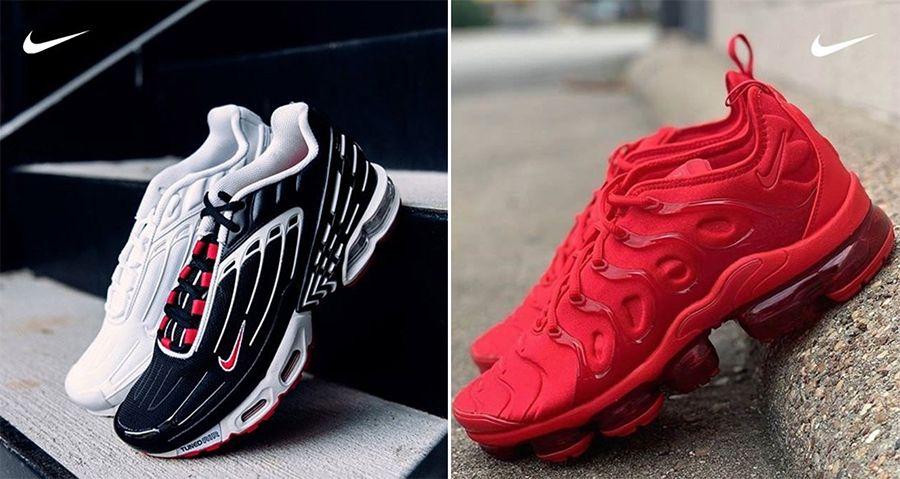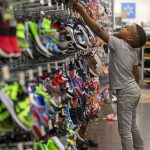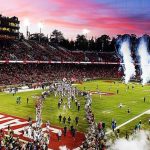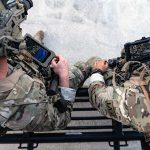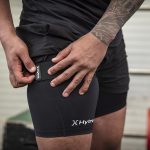Hibbett Sports Inc., posted a net loss of $15.3 million, or 92 cents a share, in the first quarter, as sales dropped 21.4 percent. E-commerce sales vaulted 110.5 percent and the retailer said its strong balance sheet provides ample liquidity to manage the COVID-19 fallout.
Mike Longo, president and chief executive officer, said in a statement, “I am extremely proud of the Hibbett team. Through their hard work and dedication, we were able to produce strong results during this very challenging retail environment. When COVID-19 struck, we decided to have our customers and team members navigate us through these uncharted waters. In other words, if our customers had essential needs and wanted to shop, and our team was eager to service our loyal customers, then Hibbett would wholeheartedly support them. In conjunction with state and local authorities, we remained open, where prudent, and ran our stores in a way that was both safe for our team members and customers. At the same time, we reinforced our best-in-class digital platform with extra product, marketing, and an emphasis on fulfillment from the distribution centers and the stores, including curbside pick-up. As a result, we gained many first-time customers. Through the hard work of our Hibbett Sports and City Gear stores, the dedication of our distribution center employees and the seven day a week work from our people in the Store Support Center, we accomplished a result that we believe sets us apart from the majority of retail.”
Longo continued, “We have a strong business model, talented employees and a resilient customer base. Our ability to react, adapt and execute successfully in a constantly changing environment further reinforces the opportunities ahead of us. I believe the company will emerge from this crisis stronger than ever.”
Adapting to the COVID-19 Business Environment
Throughout this challenging time, the company was able to navigate a rapidly changing retail landscape by leveraging omnichannel and distribution capabilities, having access to and availability of in-demand products, taking decisive action to protect liquidity and demonstrating the ability to reopen stores quickly when circumstances allowed. A few highlights include:
- Total comp sales were down less than 20 percent versus the prior year despite having its store fleet open for approximately 60 percent of the total available selling days in the quarter.
- Digital traffic was up over 80 percent and conversion increased 26 percent for the quarter compared to the prior year.
- Over 40 percent of online sales in the second half of the quarter were new customers.
- Inventory allocation systems and distribution infrastructure ramped up to support increased online demand.
- The Merchandise team proactively managed the flow of goods in collaboration with its vendor partners, resulting in a decrease in year-over-year inventory and an inventory balance that remained in line with demand.
- Worked with merchandise and non-merchandise vendors to extend terms.
- Converted two unsecured, demand lines of credit into a single secured line of credit with a one-year term.
- Nearly 700 stores were open to the public at the end of the quarter and over 1,000 are open today. Many reported significant comparable sales increases upon their reopening.
In addition, the company continues to be proactive in protecting the health and safety of its team members and customers and all locations are subject to the following safety guidelines:
- Stores are being extensively cleaned on a daily basis.
The number of customers allowed in stores open to the public is limited and social distancing is being practiced and maintained. - Store employees or customers exhibiting any symptoms are not permitted to enter the store.
- Hand sanitizer is readily available to all team members and customers.
- Curbside pick-up is available for all Buy Online, Pick-up In-Store orders where allowed.
- Contactless payment is available in all stores.
For more information, visit here.
First Quarter Results
Net sales for the 13-week period ended May 2, 2020, decreased 21.4 percent to $269.8 million compared with $343.3 million for the 13-week period ended May 4, 2019. Comparable store sales decreased 19.5 percent, but e-commerce sales grew by 110.5 percent and represented 22.3 percent of total net sales for the first quarter. The decline in overall sales was mainly due to the large number of stores that were closed entirely or limited to fulfill e-commerce orders and curbside pick-up which began in March. Hibbett Sports and City Gear stores began to reopen to customer traffic toward the end of April as permitted by the company’s landlords and the communities the company serves.
Gross margin was 27.5 percent of net sales for the 13-week period ended May 2, 2020, compared with 34.5 percent of net sales for the 13-week period ended May 4, 2019. The approximate 700 basis point decrease was driven by the significant mix shift toward e-commerce sales, which carry a lower margin due to incremental shipping costs, and a $5.1 million increase in inventory valuation reserves. Excluding certain COVID-19 expenses, non-GAAP gross margin was 29.4 percent compared to the non-GAAP gross margin of 34.8 percent in the prior year.
Store operating, selling and administrative (SG&A) expenses including goodwill impairment was 33.1 percent of net sales for the 13-week period ended May 2, 2020, compared with 21.6 percent of net sales for the 13-week period ended May 4, 2019. A large portion of this increase resulted from impacts related to COVID-19. This included non-cash intangible asset impairments triggered by a significant decrease in the market valuation of the company and payroll costs to support team members at closed stores. These charges were partially offset by a favorable adjustment to the earnout liability related to the City Gear acquisition. On a non-GAAP basis, comparable SG&A expenses increased approximately 280 basis points to 23.9 percent of net sales for the 13-week period ended May 2, 2020, from 21.1 percent of net sales for the 13-week period ended May 4, 2019, mainly due to the deleveraging impact of the sales shortfall.
Net loss for the 13-week period ended May 2, 2020, was $15.3 million, or $0.92 per share, compared with net income of $27.9 million, or $1.50 per diluted share for the 13-week period ended May 4, 2019. On an adjusted basis, net income for the 13-week period ended May 2, 2020, was $5.2 million, or $0.31 per diluted share, compared with adjusted net income for the 13-week period ended May 4, 2019 of $29.8 million, or $1.61 per diluted share.
For the quarter, the company opened three stores, rebranded two Hibbett stores to City Gear stores and closed eight stores, bringing the store base to 1,078 in 35 states as of May 2, 2020. Store closures primarily included underperforming stores but also included Hibbett stores closed for rebranding.
Balance Sheet and Stock Repurchases
Hibbett ended the first quarter of Fiscal 2021 with $106.2 million of available cash and cash equivalents on the unaudited condensed consolidated balance sheet. As of May 2, 2020, the company had $50.0 million of debt outstanding and $25.0 million available under its $75.0 million secured credit facility.
Inventory at the end of the first quarter of Fiscal 2021 was $242.0 million, a 2.6 percent decrease compared to the prior year first quarter. The company’s ability to support strong e-commerce demand throughout the pandemic in conjunction with aggressive inventory management and an increase in the lower of cost or market reserve were the main drivers of the inventory reduction.
During the first quarter, the company repurchased 458,913 shares of common stock for a total expenditure of $10.2 million, including 30,895 shares acquired from holders of restricted stock unit awards to satisfy tax withholding requirements of $0.4 million. All shares acquired under the company’s share repurchase plan were executed via a 10b5-1 plan that was put in place prior to the COVID-19 pandemic. Approximately $143.3 million remained authorized for future stock repurchases through January 29, 2022.
Fiscal 2021 Outlook
Due to the continued uncertainty regarding the overall impact COVID-19 will have on its business, the company is not providing a full-year outlook at this time.

